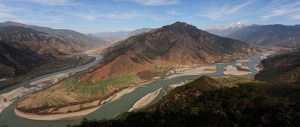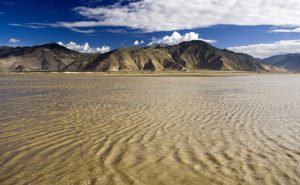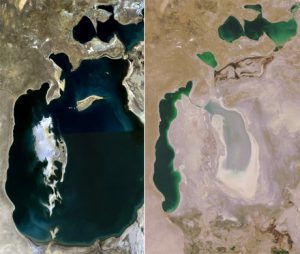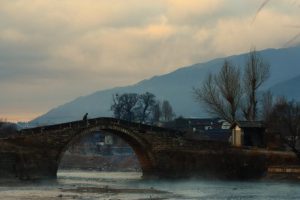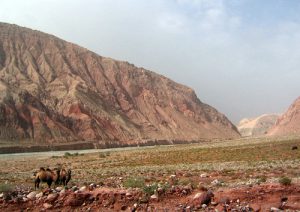It was the fourth Yangtze flood of the year and, on July 24, the water level at Chaotianmen in Chongqing, western China, hit 187.92 metres – the highest flood peak since 1981. Up to 71,200 cubic metres of water flowed past every second, 28 times faster than the Yellow River and with volumes greater than those recorded during the huge floods of 1998 and 2010. This was the biggest test for the Three Gorges Dam in its nine-year history.
Official reports from Chongqing city indicate its outlying districts of Jiangjin and Yongchuan were badly impacted by the floods. In total, around 163,000 people were affected, including more than 82,000 evacuated from their homes.
Though this was the mammoth dam’s most serious test to date, in terms of what the structure is built to withstand it was a moderate challenge at worst; the kind of thing its operators expect to see every 20 years. After all, the barrage was designed to be able to cope with once-in-a-millennium floods on a daily basis, and to be able to withstand a once-in-10-millennia flood – plus 10%.
Monitoring showed that, when the flood peak reached the dam, displacement, seepage and deformation were all within normal ranges, and all safety indicators remained stable. The dam had already seen three flood peaks earlier that month.
However, as the Three Gorges Dam released more water, the flood risk further down the Yangtze increased. The water level in China’s largest freshwater lake, Poyang, rose to its highest level for two years. Some 2,200 people were assigned to monitor dykes in the lakeside areas of Jiujiang, Shangrao and Nanchang, as well as the stretch of the Yangtze in Jiujiang.
If the rainy season in the upper Yangtze coincides with that of the lower and middle parts of the river, severe flooding can hit the plains downstream. Most years, that doesn’t happen – but this year it did: “That’s the situation we’re seeing now,” said a Yangtze flood-prevention official, “and so there’s a lot of pressure on the lower and middle reaches of the river.”
The Three Gorges project has always been controversial, from early discussions and initial approval to construction and operation. Renowned hydro-engineer Huang Wanli once predicted that the dam would cause Chongqing’s ports to become blocked up with silt and gravel within a decade.
Since the Three Gorges reservoir was filled, there have been no repetitions of the severe flooding of 1998, which killed more than 3,700 people and left 15 million homeless. But the controversy hanging over the dam has spread to questions about its impacts on drought and the downstream climate. These complex issues, which interlink with hot topics like climate change, have sustained the dam as a focus of public debate in China.
In recent years, the Yangtze basin – not usually short of water – has been hit by two serious droughts: first the 2006 summer drought in Sichuan and Chongqing and, more recently, the March 2010 drought, also in the south-west. Some people blamed these disasters on the Three Gorges Dam.
Former chief engineer at Hunan’s water authority Nie Fangrong argues that, though the droughts were caused by a decline in rainfall, they were exacerbated by ecosystem changes wrought in the lower Yangtze River by the Three Gorges dam. But Cao Guangjing, chief executive of dam developer the Three Gorges Group, has pointed out that the structure stores water between August and October every year, and releases increasing amounts of water from January onwards, when the reservoir level drops. During that period, the dam is actually helping to relieve drought, rather than holding water back, he said.
Other critics blame the barrage for changes in the climate around the reservoir and downstream. They say it has created a low-pressure zone which affects normal atmospheric flows, triggering extreme weather events such as the 2006 and 2010 droughts, and the 2008 blizzards in southern China. The Chinese Meteorological Administration and other experts have said this is nothing to do with the dam: global climate change is causing extreme weather. Liu Min, head of the Wuhan Regional Climate Centre at Hubei Meteorological Bureau, said there is no data to show that the dam has caused drought on the lower Yangtze.
The dam’s most important role – flood prevention – has also been a source of controversy. Informed sources say that local governments downstream of the dam have all asked the operators to release less water in order to reduce flood risks, meaning the dam is under pressure from both sides.
The dam has long faced such difficulties. Upstream, the city of Chongqing complains that the dam makes flood prevention more difficult – that “Chongqing drowns to save Wuhan”. Downstream, there are complaints that it continues to release water even when there are flood risks. Cai Qihua, head of the Yangtze River Commission, said this is a misunderstanding: when the dam holds back floodwaters, the reservoir level does rise, but this has little or no impact on Chongqing upstream. The rising waters in Chongqing are due to water coming from the Jin, Min and Jialing rivers, and water backing up at the Tongluo Gorge, downstream of Chongqing, Cai said.
The dam’s role in flood prevention is to control water coming from the upper reaches of the Yangtze. When it comes to regional flooding downstream, it can only play an indirect role. Weng Lida, formerly head of the Yangtze River Commission’s Water Resources Protection Bureau, explained that the dam can retain water from upstream, but if there is heavy rain downstream, there is nothing it can do. Nor can the dam store all of the floodwaters – it can only hold back those which cannot be safely released into the rivers downstream. “The flood prevention ability of the dam is limited – it can’t do everything,” said Weng.
And since the dam can’t do everything, it is crucial to make sure that flood-control mechanisms along the length of the river are integrated. “Different regions want to handle floods differently,” added Weng. “Flood prevention on the Yangtze isn’t just about the Three Gorges – it’s made up of groups of reservoirs along the main river and its tributaries, and flood-diversion areas. Both the river basin and its regions need to be considered. That means that regional management needs to follow instructions from basin-level management, with the Yangtze Flood Prevention Office overseeing things.”
The Yangtze Institute of Survey, Planning Design and Research has calculated that, in the long-term, capacity of the Three Gorges reservoir and the upstream control reservoirs will reach almost 100 billion cubic metres, and flood prevention reservoirs 50 billion cubic metres. It would be of huge benefit to flood prevention if these can be managed in unison. Yangtze River Commission experts say that preventing floods on the lower Yangtze requires comprehensive flood-prevention work.
In May 2011, China’s State Council – the highest state organ – admitted in a statement that “while the Three Gorges Dam has brought great benefits, there are still urgent issues with relocations, environmental protection and the prevention of geological disasters; and it has had a certain impact on navigation, irrigation and water supplies.”
Given the new century has already seen a series of “once-in-a” disasters, perhaps the incredible Three Gorges Dam is only just starting to be tested.
This is based on an article that first appeared on August 2 in Times Weekly, where Deng Quanlun is a reporter. It is edited and reproduced here with permission.
Homepage image by Times Weekly
